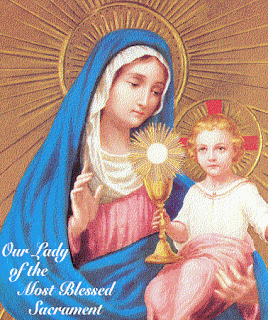ACN-USA News
12/2/2009
Violence threatens dialogue in the Philippines
A leading expert in dialogue with Islam in the Philippines has warned that the attacks which killed nearly 60 people will exacerbate religious tensions in a region increasingly infiltrated by fundamentalists.
Father Sebastiano D’Ambra said it was crucial to re-double efforts aimed at inter-faith cooperation in the troubled island of Mindanao after massacres on Monday, November 23rd, claimed the lives of at least 57 people.
Although the killings are widely seen as political, taking place ahead of elections in May, Fr. D’Ambra indicated that they are part of a breakdown in inter-faith relations in an island conscious of unique status within the Philippines as a mainly Muslim region.
The Italian priest’s comments also follow the kidnapping in Mindanao of Irish missionary Fr. Michael Sinnott, who was released earlier in November after a month in captivity.
Fr. D’Ambra is the founder of an inter-faith initiative called the Silsilah Movement and has worked on religious cooperation in the region for almost 30 years. He said that relations with Muslims have declined sharply since the 1960s.
Speaking to Catholic charity Aid to the Church in Need (ACN), which supports the work of the Silsilah movement, he said, “Religious dialogue today is becoming more and more complicated because of the influence of groups which do not encourage dialogue between Christians and Muslims.”
The priest had come to Europe in order to take part in a conference in Frankfurt, Germany, examining Christianity in Asia. He added: “Before the 1970s, there was a traditional way of living Islam in this region. Relations between Christians and Muslims were quite good, but for many reasons there has been a deterioration.”
Referring to the “infiltration” of extremists, he said, “We have seen the spread of Wahabi [extremist Sunni Islam].”
Also referring to the rise of Muslim insurgency groups including the Abu Sayyaf, he said, “The decline of Muslim-Christian relations is already serious and will get more serious unless the political situation improves, and, in the context of killings like those [on Monday], I do not see that happening soon.”
Fr. D’Ambra did insist that the Silsilah movement and other work towards better Muslim-Christian relations could yet succeed, despite the setbacks.
Set up 25 years ago, the movement creates opportunities for inter-faith cooperation centering on the 14-acre Harmony Village in Zamboanga city, which comprises an institute for religious dialogue, a training center, activities for young people from different religions as well as both a chapel and a mosque.
Fr. D’Ambra wants to expand Silsilah’s work with a media center that will prepare materials for television and radio and promote religious peace initiatives and inter-faith advocacy initiatives aimed at tackling exploitation by employers. One such program involves lobbying to stop a mining company from working in an area that risks cutting off a crucial water supply to villagers.
He said, “The Silsilah movement is working very hard. We have to be convinced of our work for dialogue. If our efforts are to work, they have to be sustainable.”
The priest added, “We have to remember that there are many groups in Mindanao who work for dialogue. Indeed most groups have a peaceful approach.”
With picture of Father Sebastiano D’Ambra
Editor’s Notes:
Your browser may not support display of this image.
Directly under the Holy Father, Aid to the Church in Need supports the faithful wherever they are persecuted, oppressed or in pastoral need. ACN is a Catholic charity - helping to bring Christ to the world through prayer, information and action.
Founded in 1947 by Father Werenfried van Straaten, whom Pope John Paul II named “An Outstanding Apostle of Charity,” the organization is now at work in over 145 countries throughout the world.
The charity undertakes thousands of projects every year including providing transport for clergy and lay Church workers, construction of church buildings, funding for priests and nuns and help to train seminarians. Since the initiative’s launch in 1979, 43 million Aid to the Church in Need Child’s Bibles have been distributed worldwide.
For more information contact Michael Varenne at michael@churchinneed.org or call 718-609-0939 or fax718-609-0938. Aid to the Church in Need, 725 Leonard Street, PO Box 220384, Brooklyn, NY 11222-0384.
Aid to the Church in Need










